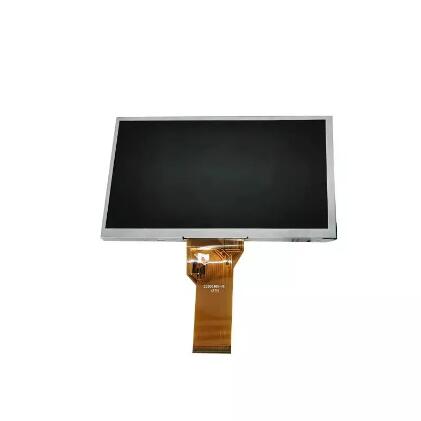Understanding Industrial Control LCD: The Backbone of Modern Automation
2024-08-30
In today’s fast-paced industrial environment, precision and reliability are paramount. Central to achieving this is the use of Industrial Control LCDs (Liquid Crystal Displays). These specialized screens are not just standard monitors but critical components in various industrial automation and control systems. In this blog, we’ll delve into what makes Industrial Control LCDs so vital, their key features, and their applications in different industries.
What is an Industrial Control LCD?
An Industrial Control LCD is a type of display screen specifically designed for use in harsh industrial environments. Unlike consumer-grade LCDs, these displays are built to withstand extreme temperatures, vibrations, dust, and moisture, ensuring that they can operate reliably under challenging conditions.
These displays are used in a wide range of industrial applications, including process control, automation systems, human-machine interfaces (HMIs), and equipment monitoring. They provide operators with real-time data, allowing them to monitor and control processes with precision.
Key Features of Industrial Control LCDs
1. Rugged Construction: One of the most critical aspects of Industrial Control LCDs is their durability. They are often housed in rugged enclosures made from materials like stainless steel or aluminum, which protect the screen from physical damage, corrosion, and environmental factors.
2. High Brightness and Contrast: Industrial environments often involve bright lighting or outdoor conditions. To ensure visibility, Industrial Control LCDs are designed with high brightness levels and contrast ratios, allowing the display to remain clear and readable even in direct sunlight.
3. Wide Temperature Range: Industrial LCDs are engineered to function across a wide temperature range, from sub-zero conditions to high heat environments. This capability is essential for industries like oil and gas, manufacturing, and transportation, where equipment is often exposed to extreme temperatures.
4. Touchscreen Capability: Many Industrial Control LCDs come with touchscreen functionality, allowing operators to interact directly with the display. This feature is especially useful in environments where space is limited or where quick, intuitive control is required.
5. Customizable Interface: The interfaces of these LCDs are often customizable to meet the specific needs of the application. This customization can include everything from the arrangement of data on the screen to the integration of specific control functions.
Applications of Industrial Control LCDs
1. Manufacturing: In manufacturing plants, Industrial Control LCDs are used for monitoring production lines, controlling robotic systems, and ensuring quality control. The ability to display real-time data and provide interactive controls helps operators maintain efficiency and address issues quickly.
2. Energy and Utilities: Power plants, water treatment facilities, and other utility services rely on Industrial Control LCDs for monitoring critical systems. These displays help operators manage everything from power generation to distribution, ensuring that services remain uninterrupted.
3. Transportation: In the transportation sector, Industrial Control LCDs are used in control rooms, on trains, and in airports. They provide vital information for managing traffic, coordinating logistics, and ensuring passenger safety.
4. Oil and Gas: The oil and gas industry operates in some of the harshest environments on earth. Industrial Control LCDs are essential for monitoring drilling operations, managing pipelines, and controlling refineries, where reliability and durability are critical.
Conclusion
Industrial Control LCDs are the unsung heroes of modern automation and control systems. Their ruggedness, reliability, and advanced features make them indispensable in a variety of industries. As technology continues to evolve, these displays will only become more sophisticated, offering even greater precision and functionality. For any industry where real-time data and control are essential, Industrial Control LCDs are the backbone of operations.



